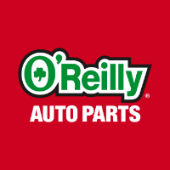-
Welcome to Auto Parts Forum
Whether you are a veteran automotive parts guru or just someone looking for some quick auto parts advice, register today and start a new topic in our forum. Registration is free and you can even sign up with social network platforms such as Facebook, X, and LinkedIn.
GM Vacuum Operated EGR Valve Installation
-
Similar Content
-
- 0 replies
- 38 views
-
- 0 replies
- 20 views
-
- 0 replies
- 27 views
-
- 0 replies
- 23 views
-
- 0 replies
- 29 views
-
-
Similar Topics
-
By Garage Gurus
From trouble accelerating to reduced gas mileage, a vacuum leak can cause a host of engine problems. Performing a vacuum ...
-
By Counterman
The VVT category continues to grow in the automotive aftermarket. These systems are becoming more and more common as manufacturers try to meet tightened fuel-economy standards. When it comes to meeting those standards, variable-valve timing (VVT) is just one piece of the puzzle. As these vehicles exit the factory warranty period, there’s a huge opportunity for counter pros to serve customers’ repair needs.
Variable-valve timing is the process of altering the timing and/or duration of a valve lift event, to improve performance, fuel economy and emissions.
On a conventional engine, the opening and closing of the valves is based on their fixed position relative to the timing chain or belt, which is driven by the crankshaft. Without VVT, the valve timing remains the same for all conditions. This means that certain compromises must be made by manufacturers; this is achieved by selecting a specific cam profile. The cam profile affects the valve lift and duration.
However, an engine equipped with VVT can make additional adjustments, so it isn’t constrained by the cam profile. VVT systems allow for improved performance over a broader operating range. The ability to alter valve timing at any engine speed gives manufacturers the ability to tune for optimal performance and efficiency. The camshaft’s timing can be advanced to produce better low-end torque, or it can be retarded to have better high-end torque as directed by the ECU.
System Overview
It’s important to point out that VVT is not just a single part or component – it’s an entire system. There are a number of components that all need to work hand-in-hand in order for the system to function. Let’s talk about some of the components that make up the entire system.
The part that actually controls the position of the camshaft is the phaser. Cam phasers may feature a piston-type construction, or a vane-type construction. Regardless of construction, they use engine-oil pressure to push against a strong internal spring. A VVT solenoid is used to adjust the engine-oil pressure into the phaser.
While early VVT systems were active only in higher rpm ranges or under specific conditions, modern systems are actively adjusting the intake and exhaust camshaft positions for the best possible efficiency at all times.
VVT systems have caused one emissions system to become all but extinct: exhaust-gas recirculation (EGR). Since VVT is able to control the way gasses enter and exit the combustion chamber, there’s no need for EGR systems.
EGR systems were designed to reduce nitrous oxides (NOx) by recirculating exhaust gasses back into the intake manifold. This causes the combustion temperature to drop below 2,500 F, preventing the formation of these harmful gasses. EGR systems did work, but lacked the reaction time and precision offered by VVT systems.
Failure Points
In many ways, engine oil is the lifeblood of the VVT system. Inadequate oil pressure or contaminated oil will hamper system performance. It’s very important that customers are following the manufacturer’s maintenance schedule, and using only the specified type, grade and viscosity of engine oil in their vehicle.
Clean engine oil is critical to VVT-system operation. The oil passages of a VVT system are like a dead end, and the oil doesn’t flush out the passages all the time. If a piece of debris finds its way into a phaser or oil-control valve, it could be there for a while. Most manufacturers use a metal-screen filter to prevent debris from reaching the variable-valve timing system. Some manufacturers make the screen serviceable but, on some vehicles, it could be inside the oil-control solenoid and almost impossible to inspect or even clean.
The relationship between the camshaft and crankshaft is critical in today’s VVT systems. The ECU relies on information from the camshaft position sensor and the crankshaft position sensor to determine ignition and valve timing. If either of these sensors produces a faulty signal, the VVT-system performance will suffer. A loose or stretched timing chain or timing belt, or a worn timing guide or tensioner, all could negatively affect the VVT system.
The post
link hidden, please login to view appeared first on link hidden, please login to view.
link hidden, please login to view 
-
By Garage Gurus
Trouble codes such as P0014 can cause a problem with the variable valve timing (VVT) system and can lead to issues such as ...




Recommended Posts
Join the conversation
You can post now and register later. If you have an account, sign in now to post with your account.
Note: Your post will require moderator approval before it will be visible.